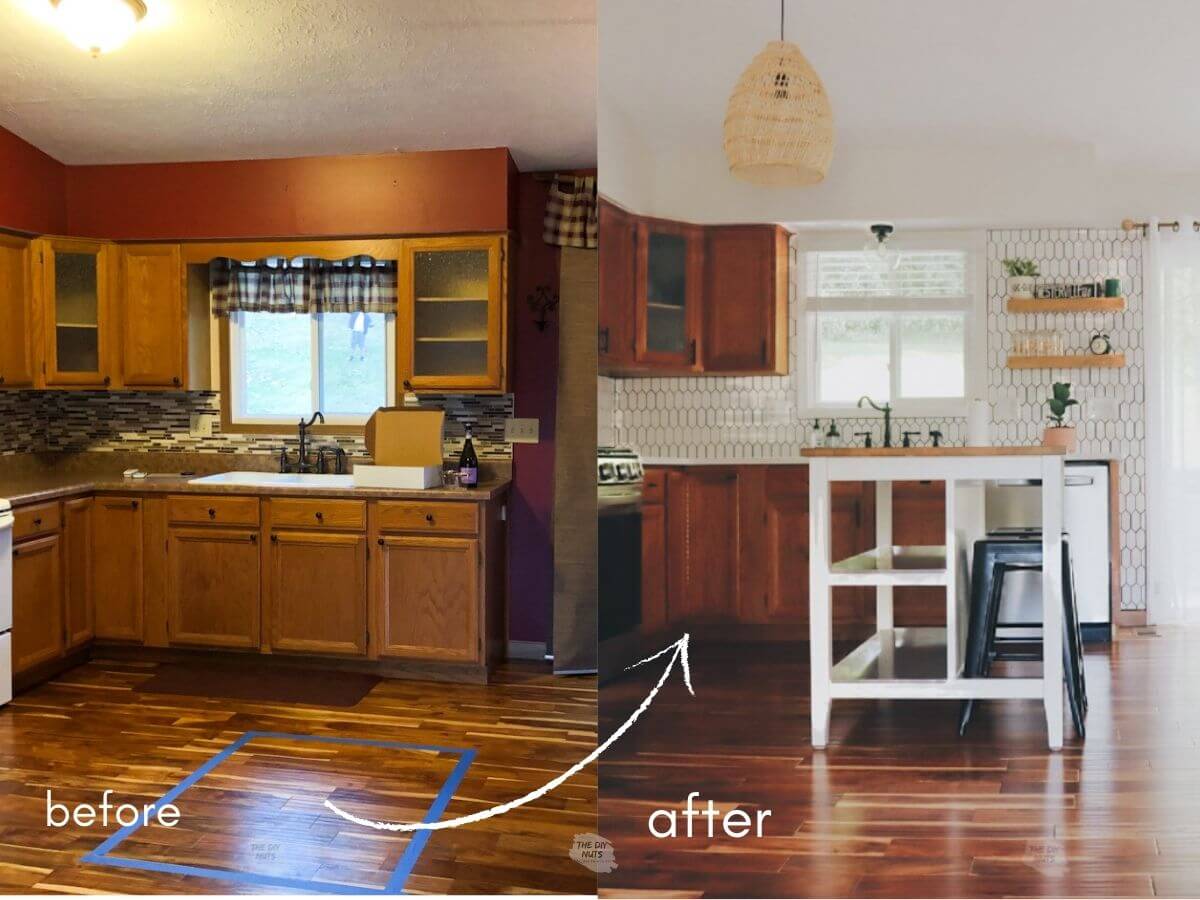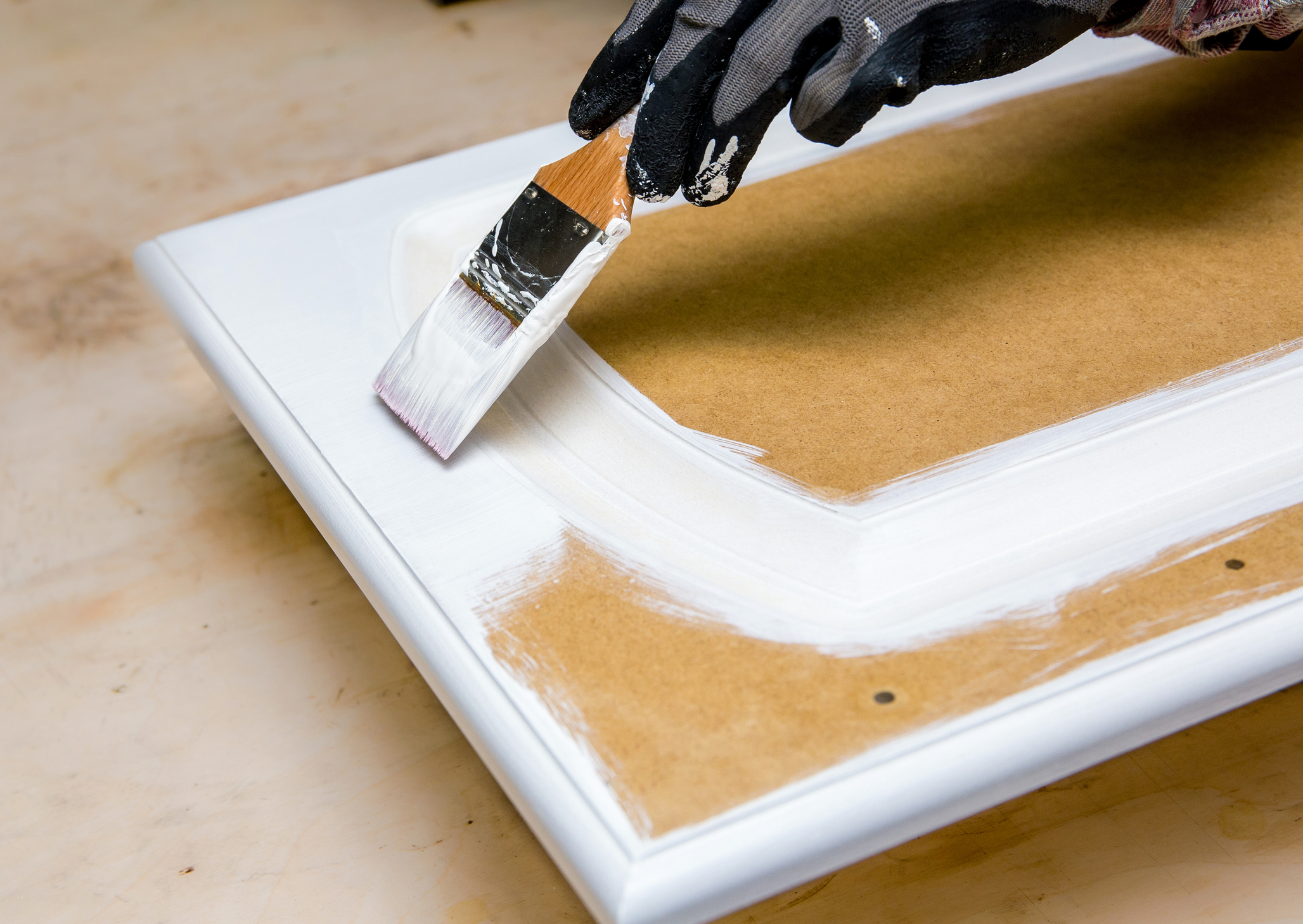Kitchen Cabinet Refacing vs. Refinishing

Updating your kitchen cabinets can significantly enhance the look and feel of your space. Two popular options for this transformation are refacing and refinishing. Both methods offer advantages and disadvantages, and the best choice depends on your specific needs and budget.
Comparing Refacing and Refinishing
Refacing and refinishing are distinct processes with different outcomes and implications.
- Refacing involves covering the existing cabinet doors and drawer fronts with new materials, such as veneer, laminate, or wood. The cabinet boxes remain untouched.
- Refinishing, on the other hand, focuses on restoring and enhancing the existing cabinet surfaces. This involves stripping the old finish, sanding, and applying a new paint or stain.
Advantages of Refacing
- Cost-Effective: Refacing is generally less expensive than replacing cabinets entirely, making it an attractive option for budget-conscious homeowners.
- Faster Completion: The refacing process is typically quicker than a full cabinet replacement, minimizing disruption to your kitchen.
- Minimal Mess: Refacing involves less demolition and dust compared to a full cabinet replacement.
- Variety of Styles: Refacing offers a wide range of materials and finishes to choose from, allowing you to personalize your kitchen’s aesthetic.
Disadvantages of Refacing
- Limited Customization: Refacing is primarily about updating the appearance of existing cabinets. It doesn’t allow for significant changes to the cabinet structure or layout.
- Potential for Uneven Surfaces: If the existing cabinets are uneven or have significant imperfections, refacing may not completely hide these issues.
- Not Suitable for Damaged Cabinets: Refacing is not a good solution for cabinets with severe structural damage or water damage.
Advantages of Refinishing
- Preserves Original Cabinetry: Refinishing maintains the original character and craftsmanship of your existing cabinets.
- Customization: Refinishing offers a high level of customization, allowing you to choose from a wide range of paint colors, stains, and finishes.
- Cost-Effective for Minor Updates: If your cabinets are in good condition but need a refresh, refinishing can be a cost-effective solution.
Disadvantages of Refinishing, Renew kitchen cabinets refacing refinishing
- Labor-Intensive: Refinishing is a labor-intensive process that can be time-consuming and require professional expertise.
- Potential for Damage: Stripping and sanding existing finishes can potentially damage the cabinet surfaces if not done carefully.
- Not Suitable for All Cabinet Materials: Refinishing may not be suitable for all cabinet materials, such as particleboard or laminate.
When to Choose Refacing
Refacing is a good option for homeowners who want to:
- Update the look of their cabinets without a complete replacement.
- Save money on a kitchen renovation.
- Minimize disruption to their kitchen during the renovation process.
When to Choose Refinishing
Refinishing is a good option for homeowners who want to:
- Preserve the original character and craftsmanship of their cabinets.
- Customize the look of their cabinets with a wide range of paint colors, stains, and finishes.
- Update the look of their cabinets without a significant investment.
Refacing Kitchen Cabinets

Refacing kitchen cabinets involves covering the existing cabinet doors, drawer fronts, and sometimes the cabinet frames with new materials, giving them a fresh look without replacing the entire cabinets. This process can significantly upgrade your kitchen’s appearance while saving money compared to full cabinet replacement.
Refacing Techniques
Refacing techniques involve several steps to achieve a complete transformation. These steps typically include:
- Preparation: The first step involves cleaning and preparing the existing cabinets. This includes removing any hardware, sanding down any rough surfaces, and filling any cracks or gaps.
- Applying New Material: The chosen refacing material, such as veneer, laminate, or wood, is then applied to the cabinet doors, drawer fronts, and frames. This usually involves adhering the new material using adhesives or special techniques depending on the material type.
- Finishing: Once the new material is applied, it needs to be finished. This may involve sanding, painting, or applying a sealant to protect the surface.
- Installation: After the finishing process, the refaced cabinet doors and drawer fronts are re-installed, and new hardware is attached.
Refacing Materials
There are several different materials commonly used for refacing kitchen cabinets, each with its own advantages and disadvantages.
- Veneer: Veneer is a thin layer of wood that is glued to a substrate, such as plywood or MDF. It offers a natural wood look and can be stained or painted to match your desired aesthetic. Veneer is relatively affordable and can provide a high-end look.
- Laminate: Laminate is a durable and affordable material that is made from layers of paper or plastic that are bonded together with resin. It comes in a wide range of colors, patterns, and finishes, including wood-look options. Laminate is resistant to scratches, stains, and heat, making it a practical choice for busy kitchens.
- Wood: Solid wood is a premium option that offers a timeless and elegant look. It can be stained or painted to match your existing decor. While more expensive than other materials, wood is durable and can be refinished multiple times over its lifespan.
Choosing the Right Refacing Material
Selecting the right refacing material depends on your budget, desired aesthetic, and lifestyle.
- Budget: Veneer and laminate are generally more affordable than solid wood.
- Aesthetic: If you want a natural wood look, veneer is a good option. For a modern or contemporary look, laminate offers a wide range of colors and patterns. Solid wood provides a classic and elegant aesthetic.
- Lifestyle: For busy families, laminate’s durability and resistance to scratches and stains make it a practical choice.
Refacing Costs
The cost of refacing kitchen cabinets varies depending on the size of your kitchen, the complexity of the project, and the materials used.
- Average Cost: The average cost of refacing kitchen cabinets ranges from $2,000 to $8,000.
- Factors Affecting Cost: The cost can be influenced by the following factors:
- Number of cabinets: More cabinets mean higher costs.
- Materials: Solid wood is more expensive than veneer or laminate.
- Labor costs: Labor costs can vary depending on your location and the complexity of the project.
Refinishing Kitchen Cabinets: Renew Kitchen Cabinets Refacing Refinishing

Refinishing kitchen cabinets is a cost-effective way to update the look of your kitchen without the expense of replacing them entirely. This process involves stripping the existing finish, sanding the surface, and applying a new coat of paint or stain.
Techniques and Considerations
Refinishing kitchen cabinets involves several steps that require careful attention to detail. The process includes cleaning, stripping, sanding, priming, painting, and finishing.
Cleaning and Preparing Cabinets
Before beginning the refinishing process, it’s essential to clean the cabinets thoroughly to remove any grease, dirt, or grime. A mild detergent and warm water are usually sufficient for this step. You should also remove any hardware, such as handles, knobs, and hinges, to ensure a smooth and even finish.
Stripping the Existing Finish
The next step is to strip the existing finish. This can be done using chemical strippers, which are available at most hardware stores. Chemical strippers work by dissolving the old finish, allowing it to be scraped off. Alternatively, you can use a heat gun or sander to remove the finish. However, these methods can be more time-consuming and require more care to avoid damaging the wood.
Sanding
Once the old finish has been removed, you need to sand the cabinets to create a smooth surface for the new finish. Start with a coarse-grit sandpaper to remove any remaining imperfections and gradually progress to finer grits to create a smooth, even surface.
Priming
Before applying paint or stain, you need to prime the cabinets. Primer helps to create a smooth, even surface for the new finish and prevents the wood from absorbing too much paint.
Painting or Staining
After priming, you can apply paint or stain. If you’re painting, use a high-quality paint designed for cabinets. Apply the paint in thin, even coats, allowing each coat to dry completely before applying the next. If you’re staining, apply the stain according to the manufacturer’s instructions.
Finishing
Once the paint or stain has dried, you can apply a clear sealant to protect the finish and enhance its durability. Polyurethane is a popular choice for cabinet finishes, as it is durable and water-resistant.
Types of Paint and Finishes
The type of paint or finish you choose will depend on your personal preferences and the style of your kitchen. Here are some common options:
Paint
- Acrylic latex paint: This is a popular choice for cabinets because it is durable, easy to clean, and comes in a wide range of colors. It is also water-based, which makes it less harmful than oil-based paints.
- Oil-based paint: Oil-based paint is more durable than acrylic latex paint, but it can be more difficult to clean and requires more time to dry. It also emits stronger fumes.
- Epoxy paint: Epoxy paint is extremely durable and resistant to scratches and stains. However, it can be more difficult to apply than other types of paint and may require professional installation.
Finishes
- Polyurethane: Polyurethane is a durable, water-resistant finish that is often used on cabinets. It is available in both gloss and matte finishes.
- Lacquer: Lacquer is a hard, durable finish that is often used on high-end cabinets. It is available in both gloss and matte finishes.
- Wax: Wax is a softer finish that provides a natural, warm look. It is not as durable as polyurethane or lacquer, but it is easy to apply and can be reapplied as needed.
Costs Associated with Refinishing Kitchen Cabinets
The cost of refinishing kitchen cabinets will vary depending on the size of your kitchen, the condition of your cabinets, and the type of paint or finish you choose. Here are some general cost estimates:
Labor: $50-$100 per cabinet
Materials: $25-$50 per cabinet
Refinishing your kitchen cabinets yourself can save you money on labor costs. However, it is important to note that refinishing cabinets can be a time-consuming and labor-intensive project. If you are not comfortable doing it yourself, you can hire a professional to refinish your cabinets.
Renew kitchen cabinets refacing refinishing – Renewing kitchen cabinets through refacing or refinishing can breathe new life into your space without the expense of a full replacement. If you’re in the Frederick, MD area, consider exploring the options available for kitchen cabinets in Frederick, MD , as local professionals can offer personalized advice and expertise for your project.
Whether you choose to update the cabinet doors, apply a fresh coat of paint, or implement a more intricate refinishing process, the end result can transform your kitchen into a stylish and functional hub.
Renewing kitchen cabinets through refacing or refinishing can be a cost-effective way to refresh the look of your kitchen. If you’re looking for inspiration and expert guidance on kitchen cabinet design in Venice, FL, consider consulting kitchen cabinets Venice FL resources.
Whether you choose to refacing or refinishing, remember to select materials and finishes that complement your overall kitchen design and personal style.
